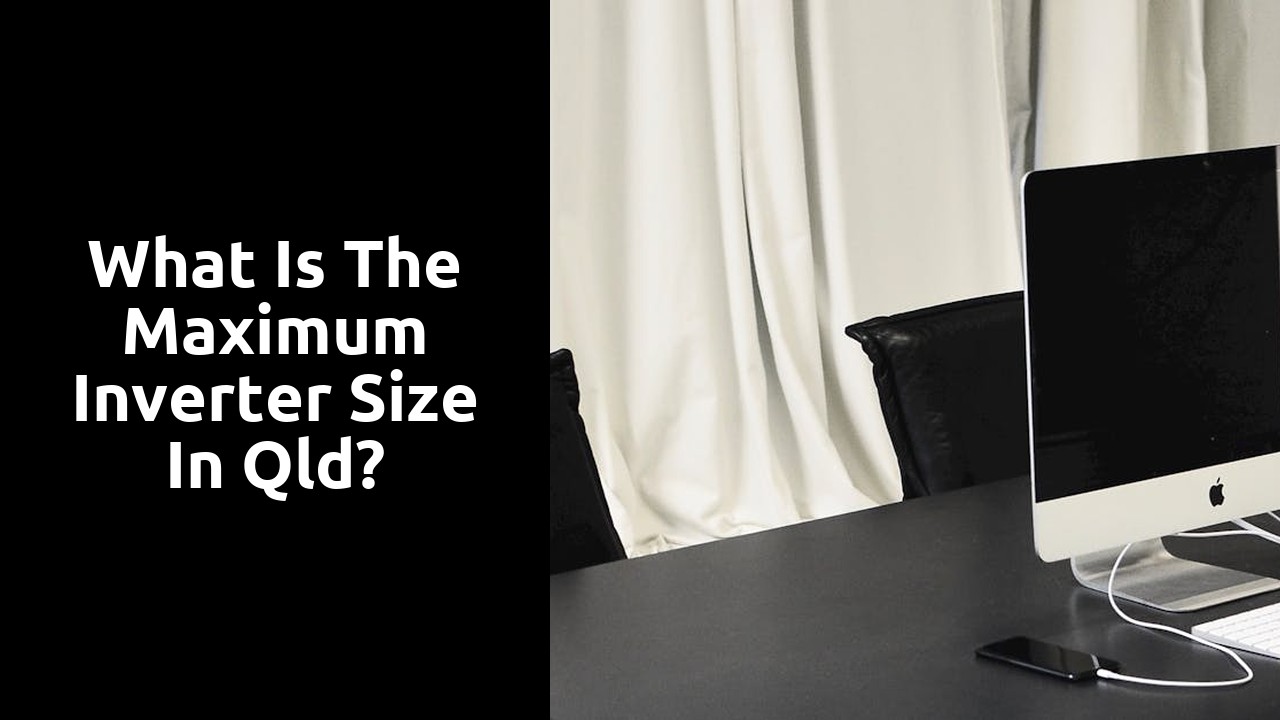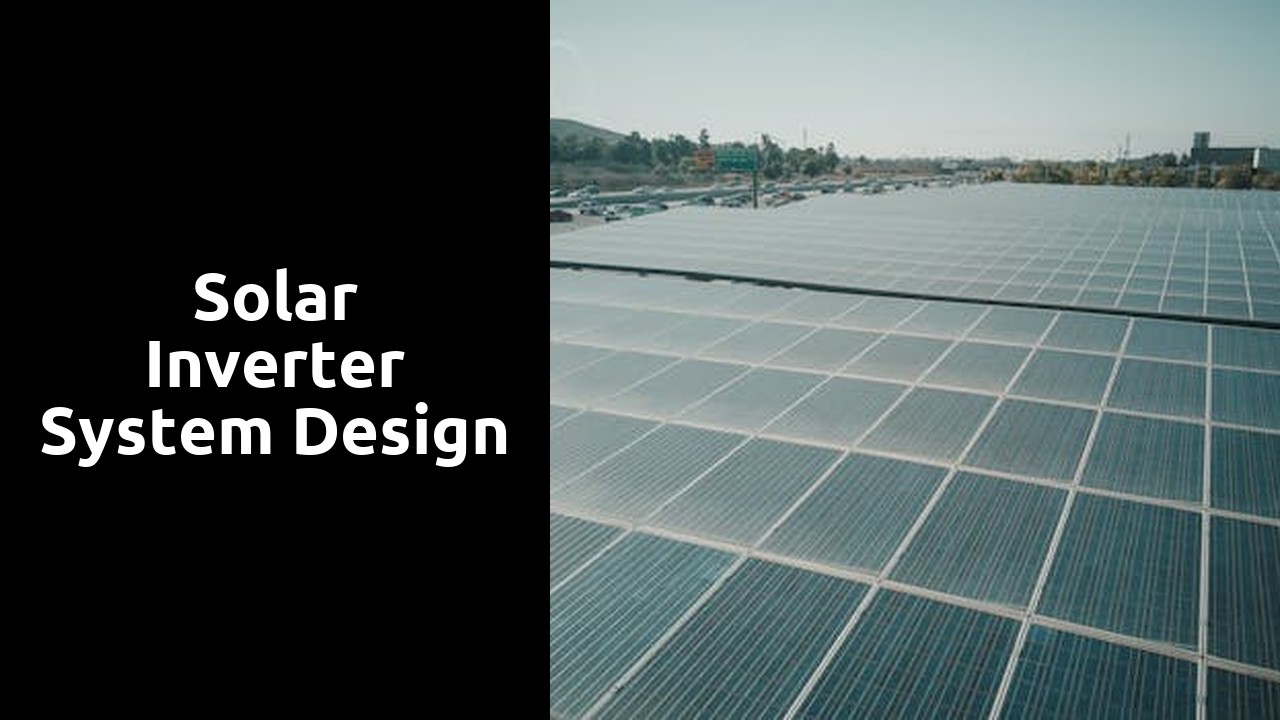
Table Of Contents
Choosing the Right Inverter Size for Your Property
When considering the right inverter size for your property's solar energy system in Queensland, it is imperative to ensure that the chosen inverter can efficiently handle the power output of the solar panels. Opting for an inverter that is too small may result in energy wastage, while selecting one that is too large could lead to inefficiencies and unnecessary additional costs. Thus, determining the appropriate size of the inverter is a crucial aspect of Solar Inverter System Design that should not be overlooked.
To effectively determine the optimal inverter size for your property, it is essential to take into account factors such as the number of solar panels, their wattage, and the maximum energy output required. By matching the inverter capacity to the energy needs of the property, you can ensure that your solar energy system operates at its highest efficiency levels. Therefore, prior consideration of these elements is vital to achieve an optimised Solar Inverter System Design that maximises energy production and usage efficiency.
Matching Inverter Capacity with Energy Needs
Matching the inverter capacity with the energy needs of your property is a critical aspect of designing an efficient solar power system. The size of the inverter plays a crucial role in converting the direct current (DC) electricity generated by solar panels into alternating current (AC) that can be used in your household. It is essential to ensure that the inverter capacity aligns with the total wattage of the solar panels to maximize the energy output and optimize overall system performance. A mismatch between the inverter size and the energy production of the solar panels can result in energy wastage or system inefficiencies, highlighting the significance of accurate Solar Inverter System Design.
By carefully assessing your property's energy consumption patterns and considering factors such as peak usage times and appliance requirements, you can determine the appropriate inverter size that will best suit your needs. Oversized inverters can lead to unnecessary costs and inefficiencies, while undersized inverters may limit the system's energy production capabilities. It is advisable to consult with a professional solar installer or designer who can conduct a thorough assessment of your energy needs and recommend an optimal Solar Inverter System Design that aligns with your specific requirements and budget constraints.
Impact of Inverter Size on FeedIn Tariffs
When considering the impact of inverter size on feed-in tariffs in Queensland, it is crucial to understand how the system design plays a significant role. The inverter size directly influences the amount of solar energy exported back to the grid, which, in turn, affects the feed-in tariff rate received by the consumer. An oversized inverter may lead to energy wastage and potential financial losses due to lower feed-in tariff rates compared to a well-matched inverter capacity.
Properly matching the inverter size with the energy needs of the property is essential for maximising the financial benefits of feed-in tariffs. By ensuring that the solar inverter system design aligns with the energy consumption patterns, homeowners can optimise their solar energy production and export levels. This strategic approach not only enhances the efficiency of the solar power system but also ensures that the feed-in tariffs contribute significantly to the overall cost savings and sustainability goals of the property owners.
Maximising Solar Energy Export with Proper Sizing
When it comes to maximising the export of solar energy, one of the critical factors to consider is the proper sizing of the solar inverter system. Ensuring that the solar inverter matches the capacity of your solar PV system is essential to optimize energy export and increase your returns. Oversizing or undersizing the inverter can lead to inefficient energy production and potential system malfunctions. Therefore, it is crucial to consult with a reputable solar energy expert to determine the optimal solar inverter size for your property based on your energy needs and consumption patterns. By investing in a correctly sized solar inverter system, you can capitalize on the full potential of your solar energy production and maximize your energy export to the grid.
Installation Requirements for Oversized Inverters
When considering the installation of oversized inverters in Queensland, it is crucial to adhere to specific guidelines to ensure the efficiency and safety of the solar power system. The selection of an inverter size that surpasses the standard recommendations necessitates meticulous planning and adherence to technical requirements. It is imperative to consult with a qualified solar installer with expertise in Solar Inverter System Design to assess the compatibility of the oversized inverter with the existing photovoltaic (PV) system.
Moreover, before proceeding with the installation of an oversized inverter, it is essential to conduct a thorough assessment of the electrical infrastructure and ensure that it can support the increased capacity. The wiring and circuitry within the property must be capable of handling the additional power output generated by the oversized inverter. Additionally, it is vital to comply with all relevant regulations and safety standards to safeguard the integrity of the solar power system and prevent any potential hazards that may arise from an improperly sized inverter.
Safety Precautions and Regulatory Compliance
Safety precautions and regulatory compliance play a crucial role in ensuring the proper functioning and longevity of a solar inverter system. When considering the installation of solar panels and inverters, it is imperative to adhere to all relevant Australian standards and guidelines to guarantee the safety of the system. By following these regulations, property owners can mitigate the risks associated with solar energy systems and ensure that their investment is both effective and secure.
One of the key regulations to consider when installing a solar inverter system in Queensland is the maximum allowable inverter size. It is important to consult with a qualified solar installer to determine the appropriate inverter capacity for your property while conforming to regulatory requirements. Failure to comply with these regulations may not only result in safety hazards but could also impact the eligibility for feed-in tariffs and other financial incentives related to solar energy production. Proper adherence to safety precautions and regulatory compliance is essential for a successful Solar Inverter System Design in Queensland.
FAQS
What is the maximum inverter size allowed in Queensland?
The maximum inverter size allowed in Queensland is currently 5kW for single-phase residential properties and 30kW for three-phase residential and commercial properties.
Can I install an inverter larger than the maximum size in Queensland?
It is important to adhere to the maximum inverter size regulations in Queensland to ensure the safety and efficiency of the solar PV system. Installing an inverter larger than the permitted size may lead to regulatory non-compliance and could pose safety risks.
How does the maximum inverter size impact the efficiency of my solar PV system?
Choosing the right inverter size that matches your energy needs is crucial for the efficiency of your solar PV system. Oversized inverters may not operate optimally and could result in reduced energy production and performance.
Are there any incentives for using inverters that are within the maximum size limit in Queensland?
In some cases, using inverters that are within the maximum size limit in Queensland may make you eligible for higher feed-in tariffs. It is advisable to consult with your energy retailer or installer to understand the potential incentives available.
What are the safety precautions to consider when installing an inverter within the maximum size limit in Queensland?
When installing an inverter within the maximum size limit in Queensland, it is important to follow all safety precautions and regulatory guidelines to ensure the safety of the system and compliance with local laws. This may include proper installation by a licensed professional and regular maintenance checks.
